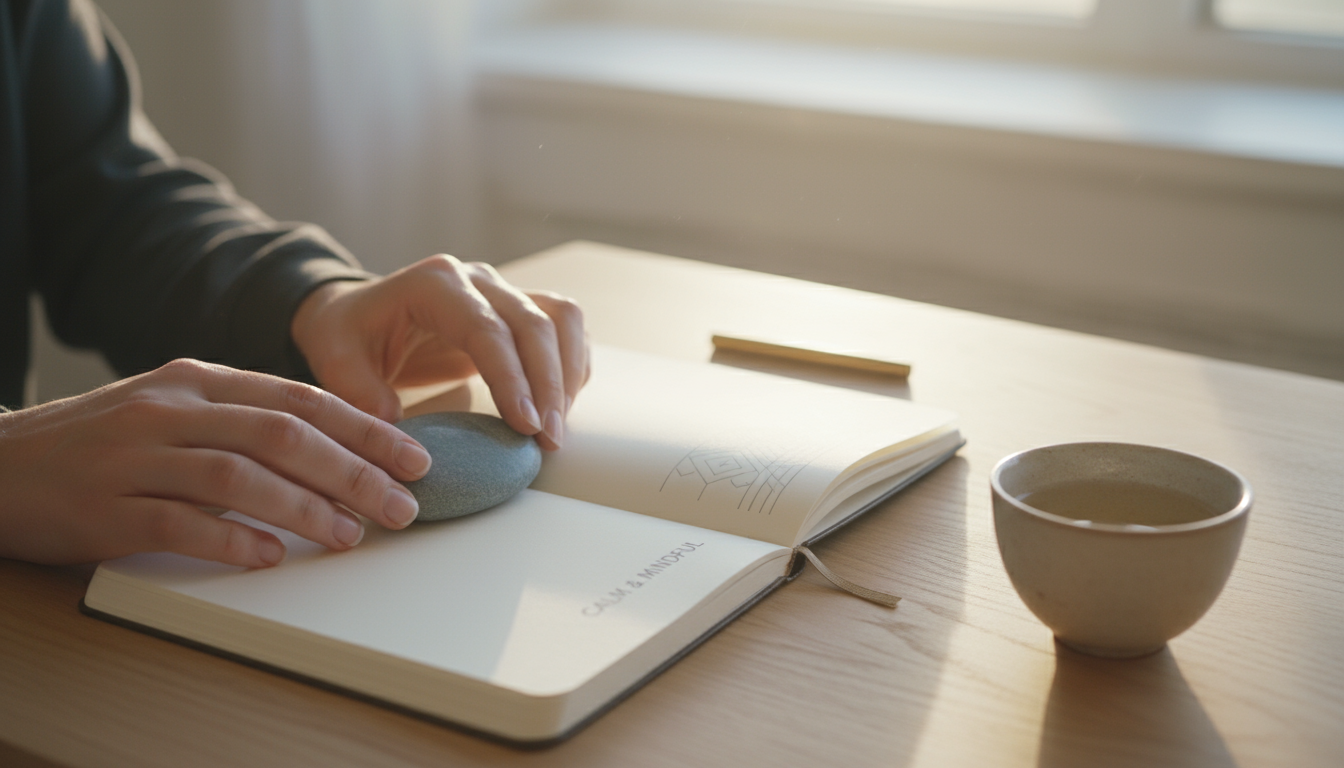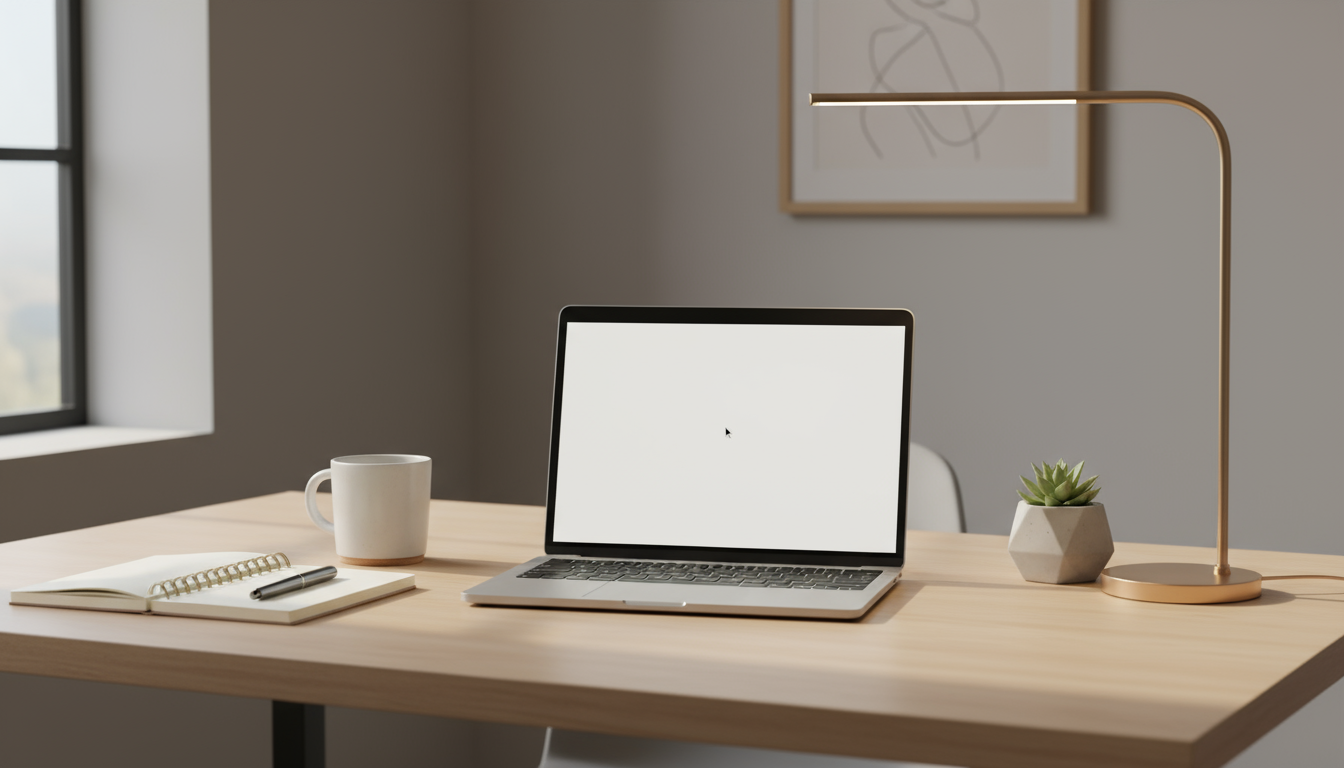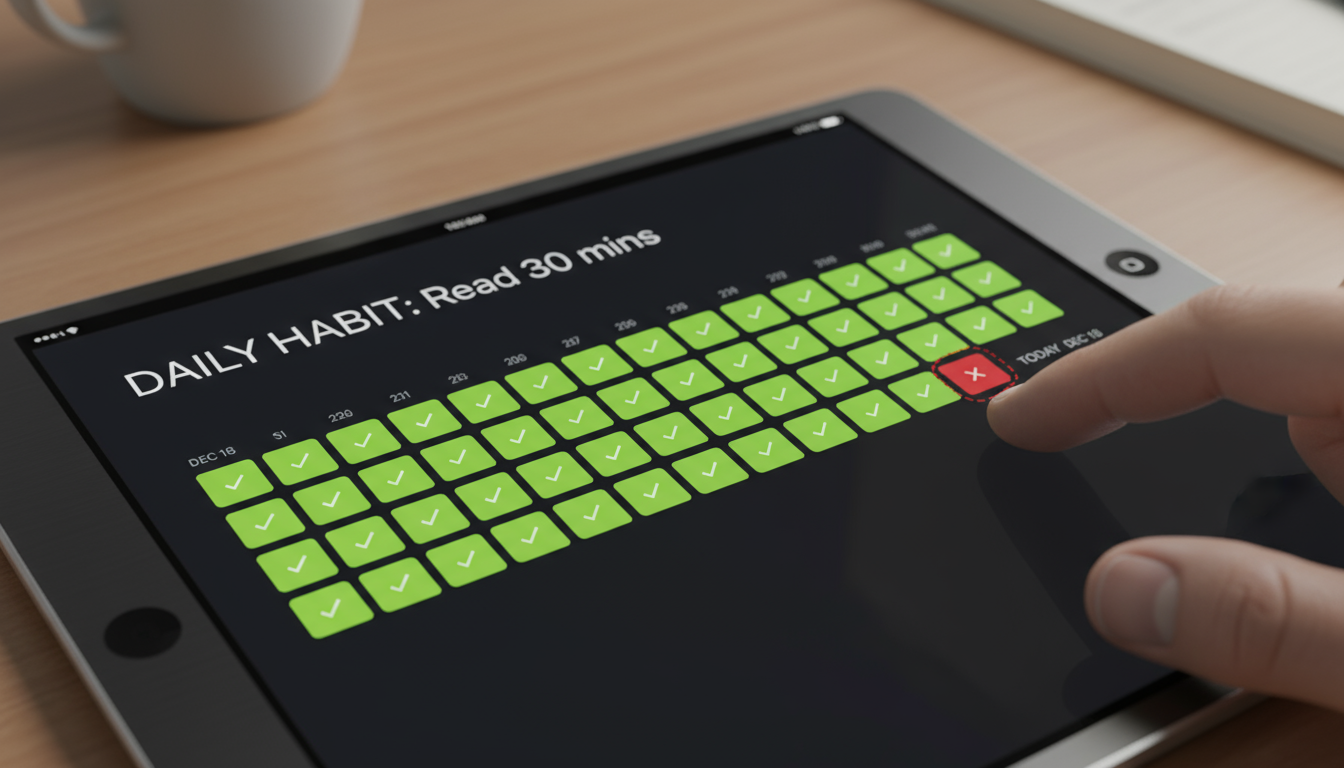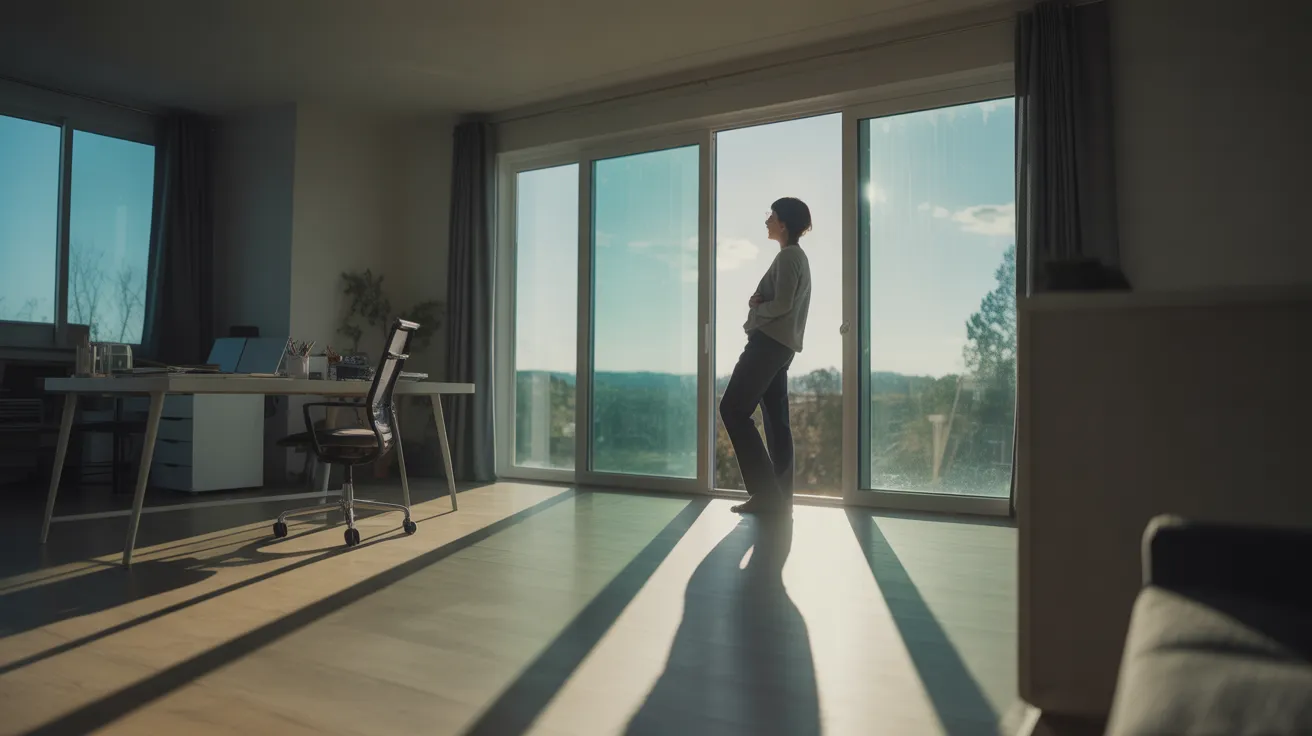
You’ve tried this before. You bought the new running shoes, the journal, the meditation app. You committed with a surge of motivation, promising yourself that this time would be different. For a few days, maybe even a week, it was. You felt the momentum. But then, life happened. A long day at work, an unexpected errand, a simple moment of exhaustion. The streak broke. And just like that, the new habit faded into a memory, another well-intentioned failure filed away with the rest.
If this story feels familiar, you are not alone. So many of us believe that building good habits and fixing bad habits is a matter of pure willpower and discipline. We think we need to be tougher, more motivated, more resilient. But for most people, especially those navigating the constant demands of modern urban life, willpower is a finite and unreliable resource. Every day, you’re bombarded with thousands of decisions, notifications, and stimuli. Your cognitive energy is spent on commuting, meeting deadlines, and deciding what to eat for lunch. By the end of the day, relying on sheer grit to force a new, difficult behavior is like trying to start a fire in the rain.
The persistent cycle of starting and stopping is one of the biggest reasons habits fail. It’s not a reflection of your character; it’s a flaw in the strategy. The all-or-nothing approach sets us up for disappointment. But there is a different way. A gentler, more strategic, and far more effective path to lasting change. It doesn’t rely on massive bursts of motivation. Instead, it’s built on a foundation of tiny, consistent steps designed to work with your brain’s natural wiring, not against it. In this guide, we’ll explore the real reasons for habit failure and provide a clear, sustainable framework for building habits that actually stick.
📚 Table of Contents
- Understanding the Mechanics of Habit
- Designing Habits That Don’t Fail
- Start with a Minimum Viable Action
- Conduct a Friction Audit
- Optimize Your Environment with Cues
- Introduce Gentle Accountability
- Safeguarding Your Habits for the Long Term
- The Psychology of the Streak (and How Not to Break)
- Planning for Relapse: The “If-Then” Strategy
- Resetting Without Shame
- Putting It All Together: Worked Examples
- Frequently Asked Questions About Habit Building
- How long does it really take to build a habit?
- What should I do when I travel or my routine is disrupted?
- I’ve been consistent, but I’ve hit a plateau. What now?
- Can I work on multiple new habits at the same time?
- Your First Steps to Building Habits That Last

Understanding the Mechanics of Habit
Before we can begin fixing habits, we need to understand how they work. Too often, we treat our behaviors like a mysterious black box. We want a different output, but we don’t look at the internal mechanism. At its core, every habit, good or bad, follows a simple neurological pattern that researchers call the habit loop. Understanding this three-part cycle is the first step toward regaining control and consciously designing your behavior.

The Habit Loop: Cue, Action, Reward
Think of the habit loop as a simple, powerful feedback system that your brain uses to automate behavior. It has three components. First is the Cue. This is the trigger that tells your brain to go into automatic mode and which habit to use. A cue can be a time of day (morning), a location (your kitchen), an emotional state (feeling stressed), or the preceding action in a sequence (finishing dinner).
Second is the Action, which is the behavior itself. This is the routine you perform, whether it’s brushing your teeth, scrolling through social media, or lacing up your running shoes. It’s the part we typically focus on when we think about habit building.
Third, and most importantly, is the Reward. This is what your brain gets for completing the action. The reward teaches your brain that this particular loop is worth remembering and repeating in the future. It could be a physical sensation (the clean feeling after brushing your teeth), an emotional payoff (the distraction from stress provided by social media), or a tangible benefit (the endorphin rush after a run). When the reward is satisfying, your brain connects the cue with the action, strengthening the entire loop over time. This is how behaviors become automatic. Habit failure often occurs when one of these three components is missing or misaligned.

Beyond Actions: The Power of Identity-Based Habits
While the habit loop explains the “how,” there’s a deeper layer that determines a habit’s durability: your identity. Many of us approach habit change by focusing on the outcome. For example, “I want to lose 15 pounds” or “I want to write a novel.” These are goals, not systems. A more powerful approach is to focus on who you want to become. This is the core of identity-based habits.
Instead of saying, “I want to run a marathon” (outcome-based), you focus on, “I am a runner” (identity-based). Instead of “I need to meditate for 10 minutes every day,” you adopt the belief, “I am a calm and mindful person.” This subtle shift is profound. Every time you perform a small action that aligns with your desired identity, you cast a vote for that new version of yourself. Going for a two-minute jog isn’t just about fitness; it’s proof that you are a runner. Reading one page of a book isn’t just about learning; it’s evidence that you are a reader.
The goal is not to achieve a single outcome but to become the type of person who naturally does these things. This reframing helps you weather the inevitable days when motivation is low. You don’t ask, “Do I feel like running today?” You ask, “What would a runner do?” This approach makes your habits a part of you, rather than a chore you have to perform. It’s one of the most effective strategies for fixing bad habits, as you’re not just stopping an action; you’re stepping into a new identity.

Designing Habits That Don’t Fail
Successful habit building isn’t about finding the perfect app or having superhuman discipline. It’s about thoughtful design. Just as an architect designs a house to be both beautiful and functional, you can design your habits to be easy, obvious, and satisfying. This proactive approach addresses the primary reasons habits fail before they even have a chance to. Let’s explore the key principles of effective habit design.

Start with a Minimum Viable Action
One of the most common points of habit failure is starting too big. We get excited and commit to a 60-minute workout, a 30-minute meditation, or writing 1,000 words a day. This works when motivation is high, but it’s unsustainable. The solution is to identify what we call a minimum viable action (MVA). This is the smallest, simplest version of your desired habit that you can do even on your worst day. It should feel almost laughably easy.
Want to build a reading habit? Your MVA is to read one page. Want to start meditating? Your MVA is to take one deep breath. Want to exercise daily? Your MVA is to put on your workout clothes. The goal of the MVA is not to get results; the goal is to show up. It bypasses your brain’s resistance to starting something difficult. Once you’ve shown up and done the two-minute version, you often find the motivation to do more. But even if you don’t, you’ve still cast a vote for your new identity. You’ve maintained the streak and reinforced the habit loop. You can always scale up later, but the MVA is your non-negotiable foundation.

Conduct a Friction Audit
Every action you take has a certain amount of friction associated with it. Friction is the collection of obstacles, steps, and mental effort standing between you and the action. High friction is a primary reason habits fail. To make good habits easier to adopt, you must intentionally decrease their friction. Conversely, to break bad habits, you must increase their friction.
Conduct a simple friction audit. For a habit you want to build, write down every single step involved. Want to go to the gym in the morning? The steps might be: wake up, turn off alarm, find gym clothes, get dressed, find keys, fill water bottle, get in the car, drive to the gym. Now, how can you reduce the friction? Lay out your gym clothes the night before. Put your keys and water bottle by the door. Choose a gym that’s on your way to work. Each small reduction makes the action more likely to happen.
For fixing bad habits, do the opposite. Want to watch less television? Unplug it after each use and put the remote in another room. Want to eat less junk food? Don’t keep it in the house, forcing you to go to the store to get it. By strategically adding or removing friction, you are designing an environment where your desired actions are the path of least resistance.

Optimize Your Environment with Cues
Your environment is one of the most powerful and invisible forces shaping your behavior. The things you see and interact with every day act as cues that trigger your habits. If you want to change your behavior, you must change your environment. The most practical way to do this is to make the cues for your good habits obvious and the cues for your bad habits invisible.
Want to drink more water? Place a water bottle on your desk, on your nightstand, and by the couch. Want to practice guitar? Take it out of its case and put it on a stand in the middle of your living room. The visual cue will prompt the action. This is also where a powerful technique called habit stacking comes in. Habit stacking involves linking a new desired habit to a pre-existing one. The existing habit becomes the cue for the new one. The formula is simple: “After I [CURRENT HABIT], I will [NEW HABIT].”
For example: “After I brush my teeth in the morning, I will do two minutes of stretching.” or “After I pour my morning coffee, I will write one sentence in my journal.” Brushing your teeth and pouring coffee are already deeply ingrained habits; they are reliable cues you can leverage to bolt on a new behavior. By designing your environment and stacking your habits, you are creating a clear, automated pathway for your new routine to follow.

Introduce Gentle Accountability
While intrinsic motivation and identity are key, we are social creatures. A layer of external, gentle accountability can provide the extra nudge we need on difficult days. This doesn’t mean finding a drill sergeant to yell at you. It means finding a way to make your commitment known in a supportive context.
This could be as simple as having a “habit buddy.” You and a friend can agree to check in with each other daily or weekly via text. The simple act of knowing someone is going to ask, “Did you do your walk today?” can be incredibly motivating. You could also join a community, whether online or in person, that is centered around your desired habit. The shared journey creates a sense of belonging and encouragement. For some, habit tracking can serve as a form of accountability to themselves. Seeing a visual representation of their streak can be a powerful incentive to not break the chain. The key is to find a form of accountability that feels encouraging, not judgmental, as shame is a poor long-term motivator.

Safeguarding Your Habits for the Long Term
Even with a perfectly designed system, you will face challenges. Life is unpredictable. You will get sick, travel, or have a day where everything goes wrong. A robust habit-building strategy isn’t about achieving perfection; it’s about having a plan for imperfection. This is where most people’s efforts fall apart. They miss one day and declare the entire project a failure. By building safeguards, you can ensure that one slip-up doesn’t derail all your progress.

The Psychology of the Streak (and How Not to Break)
Keeping a streak—a running count of consecutive days you’ve performed a habit—can be a powerful motivator. It provides a clear, visual metric of your progress and taps into our desire for consistency. Many apps are built around this very concept. Watching the number on your streak grow can provide a satisfying sense of accomplishment that acts as its own reward, strengthening the habit loop.
However, the psychology of the streak can also be a double-edged sword. When we place too much importance on an unbroken chain, a single missed day can feel catastrophic. This is the “all-or-nothing” mindset creeping back in. A broken streak can trigger feelings of guilt and frustration, leading many people to abandon the habit altogether. The logic goes, “Well, I’ve already ruined it, so what’s the point?”
To use streaks effectively, reframe your primary rule. Instead of “Never miss a day,” adopt the rule: “Never miss twice.” This simple mantra provides a crucial buffer. Missing one day is an anomaly, a simple part of being human. Life happens. But missing a second day is the beginning of a new, undesirable habit. By committing to never missing twice, you give yourself permission to be imperfect while ensuring you get back on track immediately. This transforms a potential point of catastrophic failure into a minor stumble.

Planning for Relapse: The “If-Then” Strategy
Habit failure rarely happens out of the blue. It’s often triggered by predictable situations: a stressful day at work, a vacation, a holiday gathering. Instead of hoping these situations won’t derail you, you can plan for them. This is known as relapse planning, and a simple but effective technique is the “if-then” plan.
You identify a potential obstacle and decide, in advance, how you will respond. The formula is: “If [OBSTACLE], then I will [PRE-PLANNED ACTION].” For example: “If it’s raining and I can’t do my morning walk, then I will do a five-minute stretching routine indoors.” Or, “If I am at a restaurant and tempted to break my healthy eating habit, then I will order a glass of water and look at the salad section of the menu first.”
This simple act of planning removes the need for in-the-moment willpower. When the challenging situation arises, you don’t have to debate with yourself or make a difficult decision. You already have a script to follow. You’ve done the hard cognitive work ahead of time, making it much more likely you’ll stick to your intentions when your energy is low or you’re under pressure.

Resetting Without Shame
This is perhaps the most critical safeguard of all. The emotional response to a missed day is often more damaging than the missed day itself. When you skip a workout or eat a pint of ice cream, the immediate negative feeling is often shame or guilt. We criticize ourselves, calling ourselves lazy or undisciplined. This self-judgment is not a motivator; it’s a demotivator. It creates a negative feedback loop where the habit becomes associated with feelings of failure.
The solution is to practice self-compassion and treat every moment as a fresh start. When you slip up, acknowledge it without judgment. Say to yourself, “Okay, that happened. It’s not what I intended, but it’s done. What is the next right choice I can make?” The focus immediately shifts from the past failure to the present opportunity. A habit is not built in a day, and it is not destroyed in a day. It is the product of your average behavior over time. By letting go of shame and simply focusing on the next action, you maintain your momentum and reinforce the identity of someone who is resilient, not someone who is perfect.

Putting It All Together: Worked Examples
Theory is helpful, but seeing these principles in action makes them tangible. Let’s walk through how to design two simple but powerful routines using the concepts of cues, minimum viable actions, friction reduction, and identity. These are not rigid prescriptions, but illustrations of the design process you can adapt for your own goals.

Example 1: The Evening Wind-Down Routine
Goal: Reduce screen time before bed, read more, and improve sleep quality.
Identity: “I am a calm person who prioritizes rest and recovery.”
Let’s imagine someone named Alex who currently spends the last hour of their day scrolling on their phone in bed, feeling wired and anxious. Alex decides to design a new routine. The overarching cue is a specific time: 9:30 PM. Alex sets a recurring alarm on their phone labeled “Wind-Down Time.” This is the trigger for the entire sequence. To reduce friction for the good habits and increase it for the bad, Alex prepares the environment earlier in the day. A book is placed on the bedside table. A “no-phone” charging station is set up in the kitchen. At 9:30 PM, the alarm goes off. The first action is to plug the phone in at its station in the kitchen, making it inconvenient to retrieve. This simple act creates a physical and psychological separation from the device. Next, Alex uses habit stacking. The cue of plugging in the phone triggers the next action: changing into pajamas. After changing, Alex moves to the bathroom. The cue of seeing the toothbrush triggers the habit of brushing teeth. After that, Alex returns to the bedroom. The book is sitting there, an obvious visual cue. The minimum viable action (MVA) is simply to read one page. That’s it. Most nights, Alex reads for 15-20 minutes, but on tired nights, just reading one page maintains the habit. The immediate reward is the feeling of calm and the immersive experience of the book. The long-term reward is better sleep and waking up more refreshed, which reinforces the entire loop and solidifies the identity of someone who is in control of their evenings.

Example 2: The Morning Focus Primer Routine
Goal: Start the workday with focus and intention instead of reactive email checking.
Identity: “I am a focused, productive person who is proactive, not reactive.”
Now, let’s consider Sarah. The first thing Sarah does every morning is grab her phone and start scrolling through emails and news, which immediately puts her in a state of stress. She wants to change this. Her powerful, pre-existing cue is finishing her morning cup of coffee. She decides to use habit stacking: “After I finish my coffee, I will start my focus primer.” To reduce the friction for this new routine, she prepares the night before. She closes all a’ndistracting tabs on her computer and leaves open only a blank document. She places a notepad and pen next to her keyboard. The next morning, she makes and drinks her coffee as usual. When the cup is empty, that’s the trigger. She resists the urge to check her phone. Instead, she sits at her desk. The environment is already primed for focus. Her minimum viable action (MVA) is to write down her single most important task for the day on the notepad. It takes less than 30 seconds. That’s the baseline for a successful day. On most days, she continues from this MVA into a five-minute “brain dump,” writing down everything on her mind to clear her head before starting that most important task. The immediate reward is a feeling of clarity and control over her day. She isn’t being pulled in a dozen directions by her inbox. The long-term reward is significantly higher productivity and lower work-related stress, which powerfully reinforces her new identity as a focused professional.
![]()
Frequently Asked Questions About Habit Building
As you begin this journey, questions will naturally arise. It’s a sign that you’re engaging thoughtfully with the process. Here are answers to some of the most common questions we hear, designed to provide clarity and keep you moving forward.
How long does it really take to build a habit?
The popular answer you’ve likely heard is “21 days.” Unfortunately, this is a myth based on a misinterpretation of older research. More recent and robust studies, such as one from University College London, suggest the average time it takes for a new behavior to feel automatic is closer to 66 days. However, the key word is “average.” The study found a huge range, from 18 days to as long as 254 days. The time it takes depends on the complexity of the habit, the individual, and the environment. A simple habit like drinking a glass of water after waking up might solidify in a few weeks, while a complex one like a daily 90-minute coding practice will take much longer. The takeaway is to release yourself from any specific timeline. Don’t focus on the finish line. Instead, focus on the process of showing up each day. Consistency is far more important than speed.
What should I do when I travel or my routine is disrupted?
This is a classic habit-failure scenario. A disruption in your environment and schedule can easily break your new routines. The key is to plan ahead and scale down. Before you travel, think about how you can adapt your habits to the new context. Your goal is not perfection, but maintenance. Lean heavily on your minimum viable action (MVA). If your habit is a 30-minute workout, perhaps your “travel MVA” is 10 bodyweight squats in your hotel room. If you write 500 words a day, maybe it’s just writing one sentence in a notes app. By performing a tiny version of the habit, you keep the streak alive (remembering “never miss twice”) and make it much easier to ramp back up to your normal routine when you return home. Don’t view travel as a pause button, but as an opportunity to practice flexibility.
I’ve been consistent, but I’ve hit a plateau. What now?
Plateaus are a normal and expected part of any long-term process, whether it’s fitness, learning a skill, or habit building. First, acknowledge your progress so far. You’ve successfully made a behavior consistent, which is a huge victory. A plateau can happen for a few reasons. You might be getting bored, or the habit may no longer be challenging enough to be engaging. To break through, you can introduce a small amount of novelty or a slight increase in difficulty. If you’ve been walking the same route every day, try exploring a new park. If you’ve been meditating for five minutes, try extending it to seven. You can also re-engage with your “why.” Revisit your identity goals. Remind yourself of the person you are becoming and how this habit supports that identity. Sometimes, just reconnecting with your deeper motivation is enough to push through a period of stagnation.
Can I work on multiple new habits at the same time?
While it’s tempting to overhaul your life all at once, this is generally a recipe for burnout and one of the biggest reasons habits fail. Each new habit requires a certain amount of attention and cognitive energy to establish. Trying to build several complex habits simultaneously—like starting a new diet, a gym routine, and a daily writing practice all in the same week—divides your focus and depletes your willpower reserves too quickly. A more sustainable approach is to focus on one, or at most two, new habits at a time. Pick the one that feels most important or foundational to you. Once that habit starts to feel automatic and requires less conscious effort, you can then “stack” a new one on top of it or begin building another one. Start small, build momentum, and then expand. This is the path to durable, layered change.

Your First Steps to Building Habits That Last
Understanding why your habits are failing is the first step. Now, it’s time to move from knowledge to action. The goal isn’t to perfectly implement everything you’ve just read overnight. The goal is to take one small, deliberate step in the right direction. Over the next week, focus on creating a foundation for change, not on achieving a massive outcome. Lasting habit building is a marathon, not a sprint.
Here are three specific actions you can take, starting today, to begin designing a system that works for you:
1. Choose One Keystone Habit. Don’t try to change everything at once. Pick a single area you want to improve. It could be your morning routine, your physical activity, or your evening wind-down. Select just one habit to focus on for the next 30 days. Making this choice reduces overwhelm and focuses your energy where it can have the most impact.
2. Define Your Minimum Viable Action (MVA). Once you’ve chosen your habit, shrink it down until it feels almost effortless. If you want to journal, your MVA is to write one sentence. If you want to keep your kitchen clean, your MVA is to put one dish in the dishwasher. Write this MVA down. This is your new, non-negotiable minimum standard for success each day.
3. Design Your Cue. A habit needs a trigger. Decide what will cue your MVA. Will you use habit stacking by linking it to something you already do (“After I finish lunch, I will… “)? Or will you use an environmental cue (“When I see my running shoes by the door, I will…”)? Set up your environment right now to make that cue obvious. Put the journal on your pillow, place the single dish next to the sink, or set out your shoes. Make the starting line impossible to miss.
By taking these three small steps, you are moving away from the world of willpower and wishful thinking and into the world of intentional design. You are not just trying harder; you are working smarter. You are building a system that honors your energy, respects your limitations, and ultimately empowers you to become the person you want to be, one tiny action at a time.
Disclaimer: The information provided in this article is for educational and informational purposes only and is not intended as a substitute for professional medical or psychological advice, diagnosis, or treatment. Always seek the advice of your physician or other qualified health provider with any questions you may have regarding a medical condition or mental health concern.
For expert guidance on productivity and focus, visit American Institute of Stress, Mindful.org, American Psychological Association (APA), Society for Industrial and Organizational Psychology (SIOP) and Getting Things Done (GTD).






